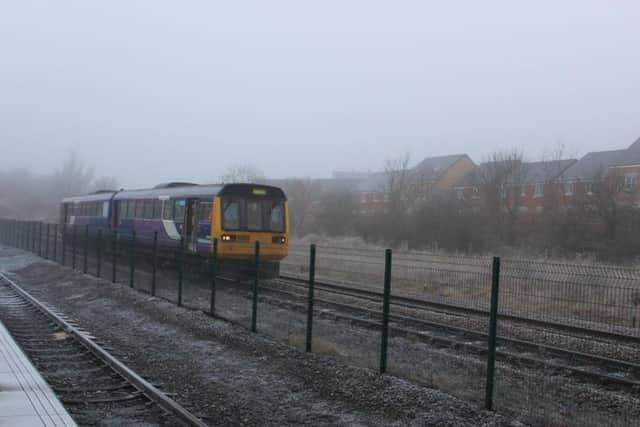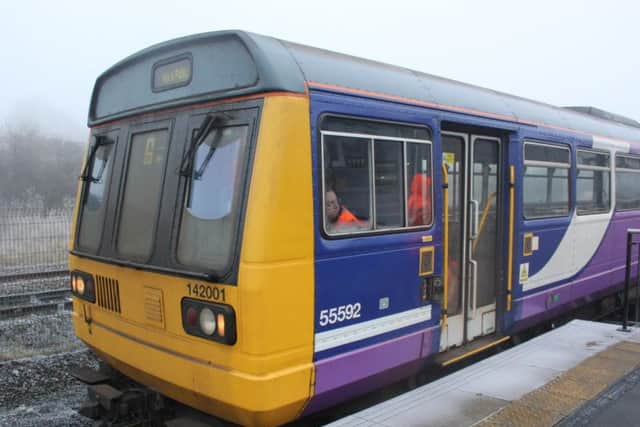The National Railway Museum's new Pacer has arrived - ironically earlier than expected
The Pacer, a Class 142 numbered 142001 and built in 1985, operated a Northern service from Leeds to Harrogate on Friday evening, its last appearance on the rail network before it was retired.
On Wednesday it arrived at the National Railway Museum's Locomotion site in Shildon, near Darlington, where it will remain for the forseeable future.
Advertisement
Hide AdAdvertisement
Hide AdIt is hoped that the Pacer - the first of the 'second generation' of the trains to be produced - will eventually go on display at the main National Railway Museum site in York following extensive redevelopment work at the attraction.


NRM head curator Anthony Coulls joked that the train arrived at its new home earlier than expected - "which has got to be a first for a Pacer!"
The museum has now confirmed that they will press ahead with plans to keep the Pacer operational and run it on a test track at Shildon, where visitors will be able to enjoy short rides on it.
Advertisement
Hide AdAdvertisement
Hide AdAngel Trains, who own most of the Pacer fleet and leased them to Northern, donated the Pacer following a request that an example of one of the British Rail-era relics be preserved for the national collection.


The company are offering several more Pacers for sale to heritage and community railways and emergency services, but most will be scrapped at a metal recycling plant in Rotherham.
"When we receive trains we assess whether we can maintain or keep them operational, and the Pacers fits the bill, so we are going to keep it running," explained Anthony.
"It is amazing how quickly the everyday becomes history. Pacers have now gone from the line closest to Shildon (Bishop Auckland to Saltburn) and I was only riding one last week - now they have vanished.
Advertisement
Hide AdAdvertisement
Hide Ad"One was designated for the national collection several years ago, to be kept for posterity."
The new arrival is in 'original' condition and retains its bus-style seating. It is currently being stored in the Shildon sidings before it goes on display in the spring.
"It is incredible that it has served these lines for 35 years. People have already descended on Shildon to see it - you can't keep anything quiet on the railway these days.
"Pacers are much derided but they were successful, they kept the byways going. We expect much more from our trains nowadays. It won't draw the crowds that the Mallard does but it is still important."
Advertisement
Hide AdAdvertisement
Hide AdNRM staff now have to learn to drive and maintain the train before it can begin running on the test track, which is two-thirds of a mile in length. It will be able to accommodate 100 passengers at a time - significantly less than a notoriously packed Pacer operating a commuter service on a Northern route.
"We hope to eventually run it at York too, as we have a track at both sites, but at the moment there is a lot of redevelopment work going on there. We may lend it to heritage railways too."
Pacers entered service in the 1980s and were intended to be a low-cost, temporary solution to keep small lines running. They have exceeded their projected lifespan by almost 20 years.
Advertisement
Hide AdAdvertisement
Hide AdThey were notorious for their dated and cold interiors, rattling motion, noisy engines and lack of reliability. Northern operated over 100 Pacers, which were leased from Angel Trains. The remainder are due to be retired in 2020.
They have become a political hot potato in recent years after their retention beyond their original scrap date was interpreted as a metaphor for failed investment in northern transport, although delays to the electrification of routes served by Pacer diesels was blamed.
Northern are in the process of introducing new rolling stock to replace them.